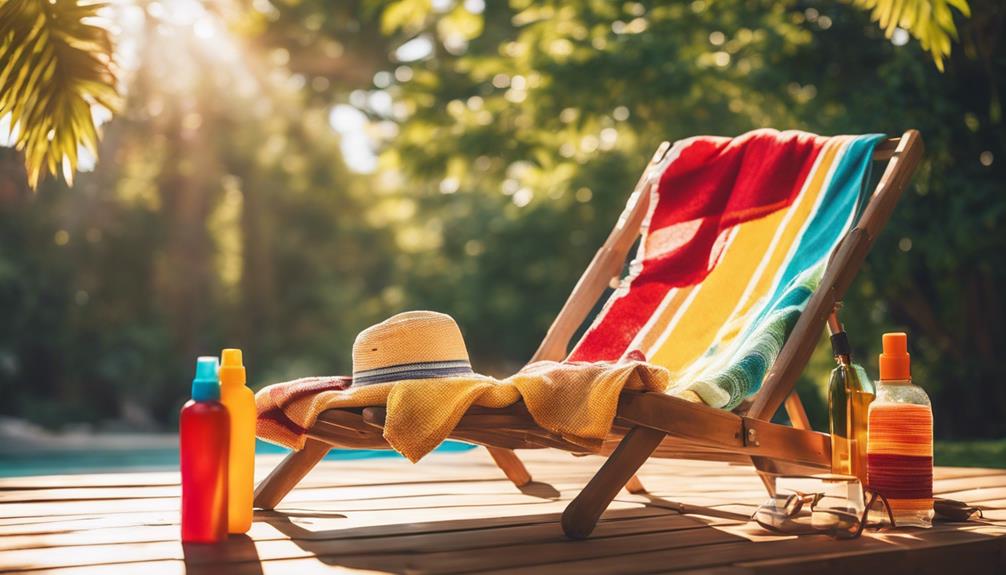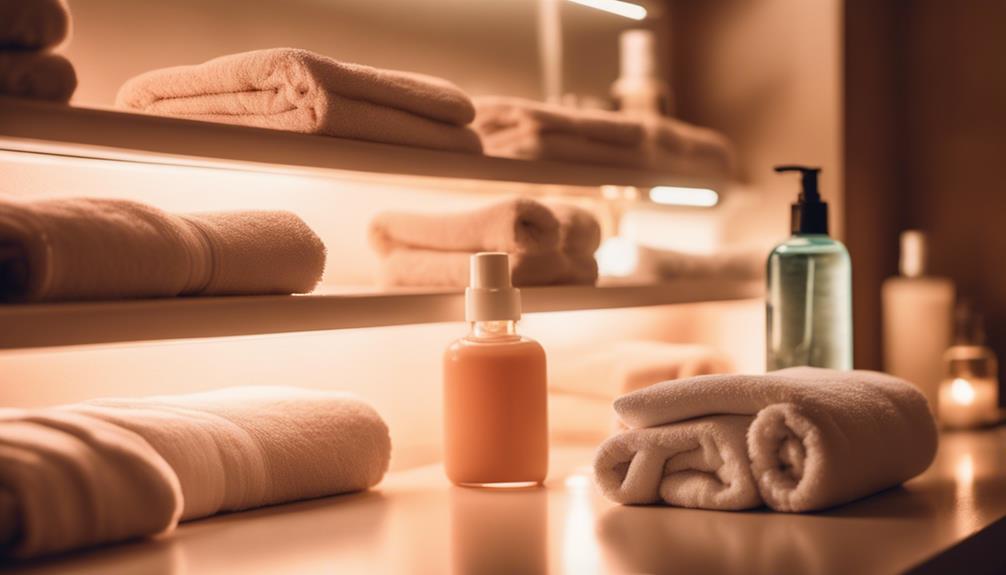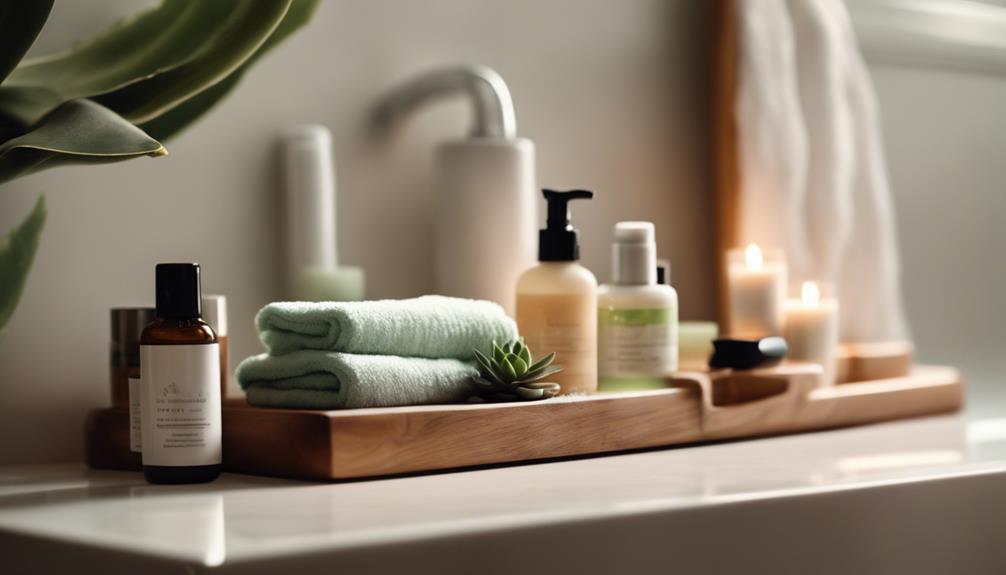To become an expert in the art of home tanning, it is essential to understand your skin type – this will help prevent sunburns and achieve a consistent tan. Optimal times for sunbathing are early mornings or late afternoons, and be sure to apply SPF 30 sunscreen every couple of hours! Exfoliating your skin before tanning will result in a smooth, even glow. Don’t forget to stay hydrated – your skin will appreciate it! Additionally, self-tanner can be a helpful ally; just remember to blend it well for a flawless bronzed appearance. Interested in more tips? There is a wealth of information available to help you achieve the perfect tan!
Key Takeaways
- Assess your skin type using the Fitzpatrick scale to determine safe and effective tanning practices.
- Exfoliate your skin before tanning to ensure an even application and prevent patchiness.
- Use SPF 30+ sunscreen and reapply every couple of hours to protect against sunburn.
- Opt for optimal tanning times, like early morning or late afternoon, to minimize UV exposure.
Understanding Skin Type
To achieve the best results from sun tanning, you need to assess your skin type using the Fitzpatrick scale to understand how your skin reacts to sun exposure.
Think of it like figuring out your superhero identity—are you a fair-skinned hero who burns easily, or a darker-toned champion who bronzes like a pro? Knowing your type helps you pick the right tanning strategy.
If you've got lighter skin, you'll want to take it slow, while those with medium to darker skin can enjoy longer sun sessions.
Plus, don't forget to prep your skin! Exfoliating gets rid of pesky dead skin cells, making your tan even and smooth, like a freshly painted wall.
Safe Tanning Practices

Choosing the right time for sun tanning is essential, so aim for early morning or late afternoon when the sun's rays are less intense. This way, you'll dodge those pesky burns!
Always check the UV index, too—nobody wants to look like a lobster. Remember to slather on SPF 30+ sunscreen every couple of hours, and don't forget to hydrate!
Think of your skin like a sponge; it loves moisture. Take breaks to cool down, and consider munching on foods rich in beta carotene, like carrots and sweet potatoes, to boost your skin's defenses.
And hey, a little coconut oil goes a long way for moisture and natural SPF. Stay safe, and enjoy that sun-kissed glow!
Effective Tanning Techniques

Effective tanning techniques focus on understanding your skin's needs and applying products evenly to achieve a natural-looking glow.
First, know your skin type; it's like picking the right outfit for a party! If you're fair-skinned, you'll want to ease into tanning with shorter sessions.
Next, always exfoliate before you start—think of it as prepping a canvas for a masterpiece.
When you're outside, move around to prevent weird tan lines, and don't forget to reapply sunscreen every two hours; it's your skin's best friend.
If you're using self-tanner, apply it in circular motions for an even look.
And remember, patience is key—great tans don't happen overnight. So, enjoy the process and have fun!
Post-Tanning Care
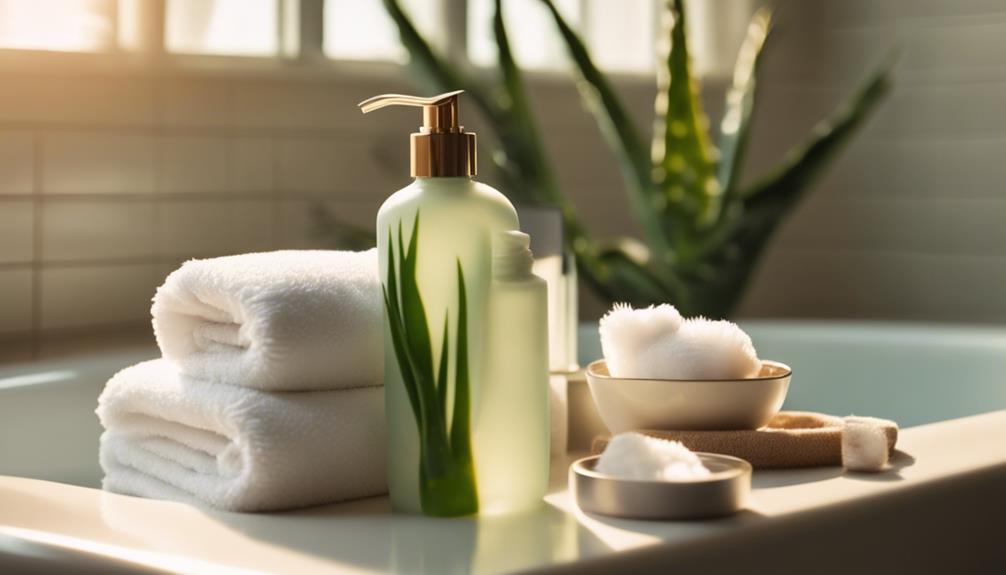
Post-tanning care is essential for maintaining your glow and ensuring your tan lasts as long as possible without fading or peeling.
First, rinse off any excess tanning product gently—think of it like washing off the extra frosting from a cake! Use a mild cleanser, avoiding harsh soaps that could strip your beautiful tan away.
Afterward, slather on a hydrating lotion to keep your skin moisturized and happy. It's like giving your skin a big drink of water!
Try to steer clear of activities like intense workouts or swimming right after tanning, as they can speed up fading. Instead, pamper yourself with some relaxing downtime—your tan deserves it!
What's your favorite post-tan treat?
Enhancing Tan Longevity
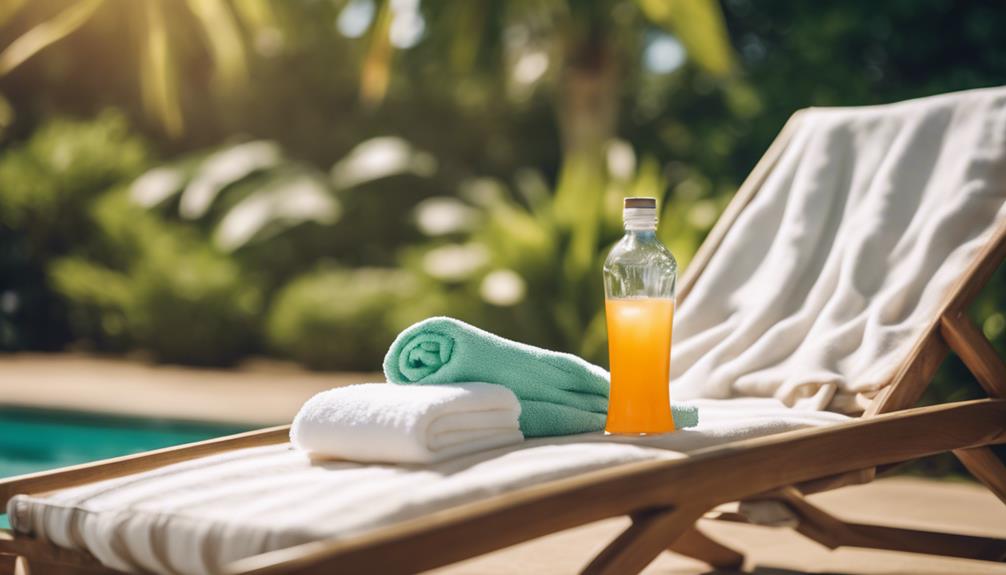
To enhance the longevity of your tan, regularly apply moisturizing lotions to keep your skin hydrated and prevent peeling. Think of your skin as a sponge; the more moisture it has, the better it holds onto that sun-kissed glow!
Here are some tips to guarantee your tan sticks around:
- Use a gentle, hydrating cleanser to avoid stripping away color.
- Drink plenty of water to keep your skin hydrated from the inside out.
- Avoid hot baths or showers; opt for lukewarm water instead.
- Reapply moisturizer daily, focusing on dry areas that tend to fade faster.
Natural Self-Tanner Recipes
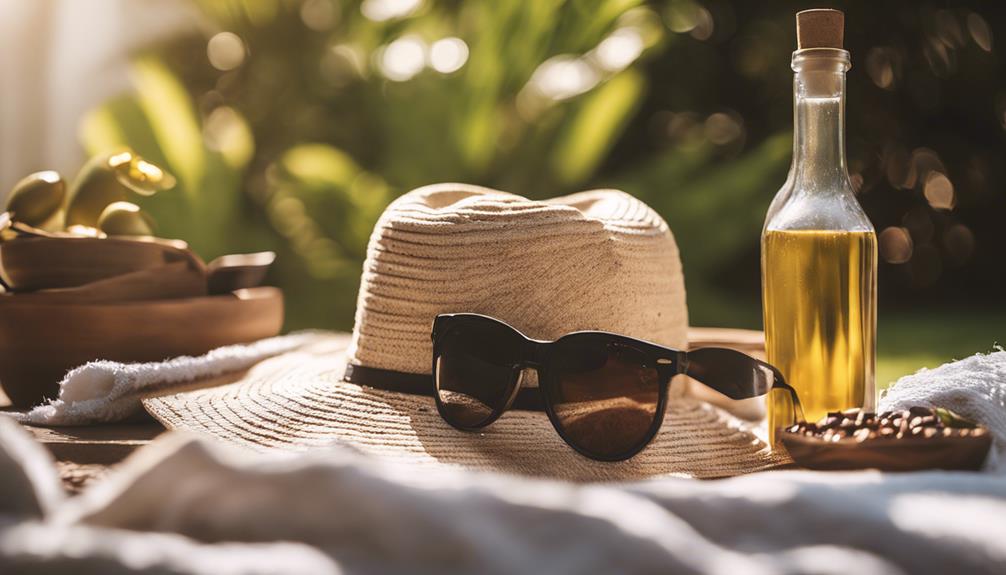
Creating your own natural self-tanner at home can be a fun and rewarding way to achieve a sun-kissed glow without the harmful effects of UV exposure. You can mix simple ingredients right from your kitchen! Here's a quick table with some easy recipes:
| Ingredient | Recipe |
|---|---|
| Cocoa Powder | Mix 2 tbsp cocoa powder with lotion |
| Black Tea | Brew 1 cup strong black tea, cool, mix with lotion |
| Coffee | Combine 2 tbsp brewed coffee with lotion |
| Beet Juice | Mix 1 tbsp beet juice with lotion |
Try these out, and don't be shy about experimenting! Just remember, the key is to blend well for a streak-free application. Happy tanning, and may your glow be fabulous!
Application Tips and Tricks
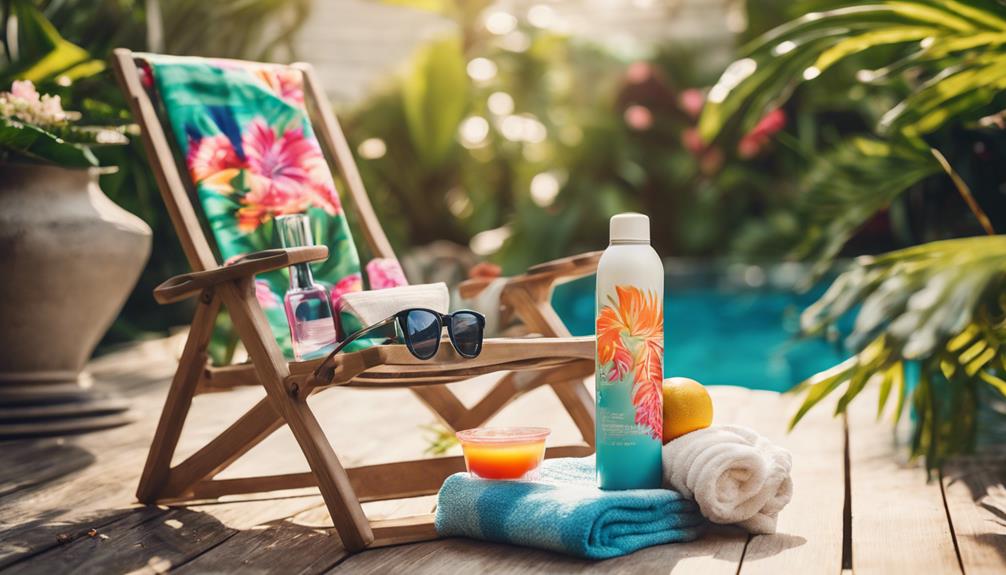
Mastering the application of self-tanner can make all the difference in achieving a flawless, even glow.
To get it just right, follow these handy tips:
- Exfoliate your skin well, especially in dry areas like elbows and knees, so the tan adheres evenly.
- Use a mitt or sponge for smooth application, avoiding stained hands and streaks.
- Apply in sections, starting with your legs, then arms, and finish with your face for a balanced look.
- Blend carefully around tricky spots, like ankles and wrists, to prevent dark patches.
With these tricks up your sleeve, you'll be flaunting that sun-kissed glow like a pro!
Frequently Asked Questions
How Can I Avoid Tan Lines While Tanning at Home?
To avoid tan lines while tanning at home, rotate your position frequently and change your swimsuit style. Consider using a tanning lotion for even coverage and apply it to all areas consistently.
What Should I Wear During a Home Tanning Session?
Picture yourself lounging under the sun, wearing lightweight, breathable fabrics like a bikini or shorts. Choose dark colors to avoid visible tan lines, and don't forget sunglasses and a wide-brimmed hat for extra protection!
Can I Tan if I Have Tattoos?
Yes, you can tan with tattoos, but you should take precautions. Protect your tattoos with sunscreen to prevent fading and discoloration. Always monitor your skin's reaction to avoid overexposure and guarantee a safe tanning experience.
How Often Should I Tan for the Best Results?
You know how it feels to chase the perfect glow? For best results, tan once or twice a week, allowing your skin time to recover. Listen to your skin and adjust based on its response.
What Is the Best Time of Year for Home Tanning?
The best time for home tanning is late spring to early fall when UV rays are stronger. You'll achieve the best results if you tan during early morning or late afternoon for safer exposure.
Can Home Sun Tanning Help Burn Calories, Or Is It Just About Getting Sunshine?
While home sun tanning can provide a dose of vitamin D, its tanning effects on metabolism are minimal. The act of tanning itself won’t significantly burn calories, but the exposure to sunlight can have other health benefits. It’s best to focus on a balanced diet and regular exercise for weight management.
Conclusion
So, you're ready to rock that sun-kissed glow from home!
Remember, “Patience is a virtue,” so take your time with each step, whether you're prepping your skin or perfecting your tan.
With the right practices and a little love for your skin, you'll shine like a star.
Don't forget to share your tanning journey and tips with friends!
Now, get out there, enjoy the sun responsibly, and embrace your beautiful, bronzed self!
